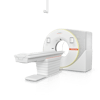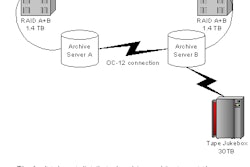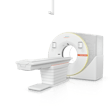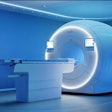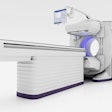SALT LAKE CITY - While interpretation workstations have received ample R&D attention, the clinical review station has more often been ignored in its role as "interpretation-station lite." However, a usability study at this week's SCAR meeting did look at nondiagnostic viewers, and found their users' needs to be quite specific.
In a Sunday session, Dr. Bradley Erickson from the department of radiology and the department of information services at the Mayo Clinic in Rochester, MN, presented the results of clinical review station usability testing he and his colleagues performed.
Erickson and colleagues sought to create a set of functional requirements for clinical image viewing stations at the Mayo Clinic. Erickson took a two-pronged approach in defining these parameters: he conducted formal usability testing and applied his four years of experience in the design of a radiology image-display applications.
According to the researchers, a clean laboratory setting with a cooperative subject may not disclose real-world performance problems, or actual clinician tolerance for slow execution speed. So in addition to monitoring verbal and visual behavior of users with the clinical image viewing application in the lab, the team provided forums for regular feedback, and conducted user surveys.
Not surprisingly, they found that image-display speed was an important requirement for users. The clinicians said a two-second wait was acceptable for primary image display when an examination is selected by a user, with an acceptable display time of one second for each subsequent image.
The users also emphasized that image manipulations should be completed in less than one second. The surveyed users requested standard display manipulation tools such as brightness/contrast and zoom/pan. Most of the clinicians also expected buttons for CT presets (abdomen, head, bone, and lung).
The researchers found that clinicians typically want to view the radiologist’s interpretation along with the images; in particular, when the report refers to specific images. The ability to directly connect the two (for example, double-clicking on the image reference in the report to bring up the associated image) is a feature greatly desired by the survey group.
Spine surgeons requested the ability to correctly localize a cross-sectional image where axial MR or CT images of lumbar and cervical levels look similar. Some users also said that a mechanism for easy comparison with older examinations, particularly CT and MR, is very important.
Overall, however, Erickson said that consistency of behavior appears to be more important than design "cleverness," as most clinicians don’t use the display application frequently enough to learn the complex patterns of a complicated feature set, such as a button that changes behavior according to a situation in the application.
"Clinicians do not constitute a uniform group of users, and the requirements vary substantially from individual to individual, even within a specialty area," although there are clear tendencies for some groups like surgeons to require more tools, Erickson cautioned.
The team recommends designing a clinical view station application with a user-configurable interface, allowing "simple," "medium," and "advanced" tool sets. The researchers also found that the ability to integrate the workstation with other clinical tools is essential to maintaining or increasing the clinician’s efficiency.
By Jonathan S. BatchelorAuntMinnie.com staff writer
May 6, 2001
Click here to post your comments about this story in our PACS Digital Community. Please include the headline of the article in your message.
Copyright © 2001 AuntMinnie.com
